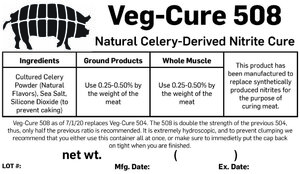- Jan 17, 2021
- 589
- 882
Is the nitrate content simply much lower in TQ and CP than the amount in #2 cure? Or is it a trial/error or "better safe than sorry" thing where we don't know well enough?
I have never used TQ, but the meat i've cured with celery powder is inexplicably better than using cure #1. It may very well have just been better luck on the smoker. I'd assume that using some amount of nitrate would make it last longer in the fridge; If enough moisture was lost during smoking, perhaps very long?
I have never used TQ, but the meat i've cured with celery powder is inexplicably better than using cure #1. It may very well have just been better luck on the smoker. I'd assume that using some amount of nitrate would make it last longer in the fridge; If enough moisture was lost during smoking, perhaps very long?





